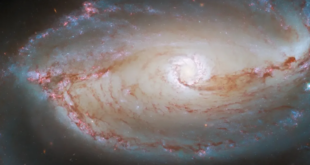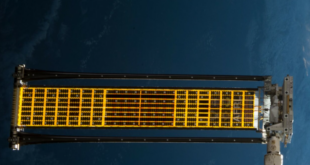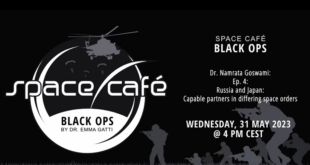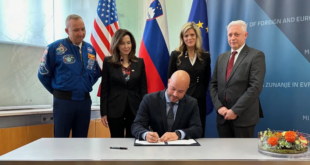
The United States Patent and Trademark Office recently issued three patents to the Space Dynamics Laboratory for innovative inventions used in researching cold atoms—a pivotal element to precise space-based timing. SDL’s Elemental Alkali-Metal Dispenser, and two types of Grating Magneto Optical Traps will enable scientists and engineers to design and build atomic clocks with hyper-accuracy.
Atomic clocks are critical for a variety of applications and measure electromagnetic signals that are emitted from subatomic particles when they change known energy levels. Cold atoms move at a slower rate that allows for longer, more precise measurements in changes of subatomic signals. Atomic clocks are the most accurate clocks that exist, the most reliable of which loses only one second every 14 billion years, approximately the age of the universe.
“SDL has worked with the Air Force Research Laboratory to develop the recent inventions that will enable us to improve the precision of measuring cold atom phenomenology for the next generation of space-based atomic clocks,” said Michael Wojcik, SDL’s Albuquerque site lead and program manager for cold atom research. “SDL’s Elemental Alkali-Metal Dispenser will provide a more reliable and efficient distribution of rubidium atoms, the element used in the smallest atomic clocks, and new optical traps will allow lasers to more accurately distribute energy within a confined space to keep atoms near-motionless.”
The Elemental Alkali-Metal Dispenser is a major step forward because it addresses two key outstanding challenges of practical atomic sensing: how to store large amounts of extremely pure alkali metal atoms, such as rubidium and cesium, and how to precisely release those atoms into the sensor. The Elemental Alkali-Metal Dispenser is similar to a kitchen sponge that has been soaked in water—though in this case, it is a graphite sponge soaked in rubidium or cesium. As the graphite sponge is heated, the rubidium or cesium atoms are released at a controllable rate. This dispensing technology allows for high-capacity storage of extremely clean alkali metals, which will enable smaller and more reliable atomic sensors.
The 2001 Nobel Prize for Physics was awarded for the first laboratory demonstration of a Bose-Einstein Condensate, also known as BEC. BEC is a fourth state of matter—solid, liquid, gas, and BEC—where a collection of approximately a million atoms behave as a single macroscopic quantum entity. BECs can be used in atomic clocks and as extremely sensitive accelerometers and gyroscopes. The invention of a Grating Magneto Optical Trap is a significant technological step toward more widespread adoption of BECs by industry because it dramatically simplifies optical traps, reducing the required number of lasers, the required amount of power, and the size of the instrument.
Why does humanity need such accurate clocks?
The US Air Force’s Global Positioning System satellites use rubidium atomic clocks to provide timing signals necessary for effective operation. Beyond military operations and providing accurate locations on mobile phones, GPS is vital for hundreds of applications affecting most aspects of day-to-day living—banking, grocery shopping, farming, power grids, communications, and the stock markets all rely on GPS. Banks and stock exchanges, for example, use GPS to time-stamp financial transactions and trades, and to ensure that global commercial computer systems are synced to the same time. Inaccuracies in time-stamps could result in loss of revenue.
“The dedicated women and men of the Space Dynamics Laboratory remain the vanguard of emergent technologies within our core areas of expertise. These patents illustrate the importance of research and development for both government and commercial applications,” said H. Scott Hinton, president of SDL. “As a trusted advisor to the government and a strategic Department of Defense research center, SDL is honored to support the Air Force Research Laboratory as it re-imagines what’s possible, creating tomorrow’s technology today.”
Celebrating its sixtieth year, SDL is headquartered in North Logan, UT, and has offices in Albuquerque, NM; Bedford, MA; Dayton, OH; Huntsville, AL; Houston, TX; Los Angeles, CA; Stafford, VA; and Washington, DC. As one of fourteen University Affiliated Research Centers, SDL serves as a subject matter expert in its core areas to the US Government and ensures that essential engineering and technology capabilities of the Department of Defense are maintained.
This announcement was made on 3 April 2020.
 SpaceWatch.Global An independent perspective on space
SpaceWatch.Global An independent perspective on space




